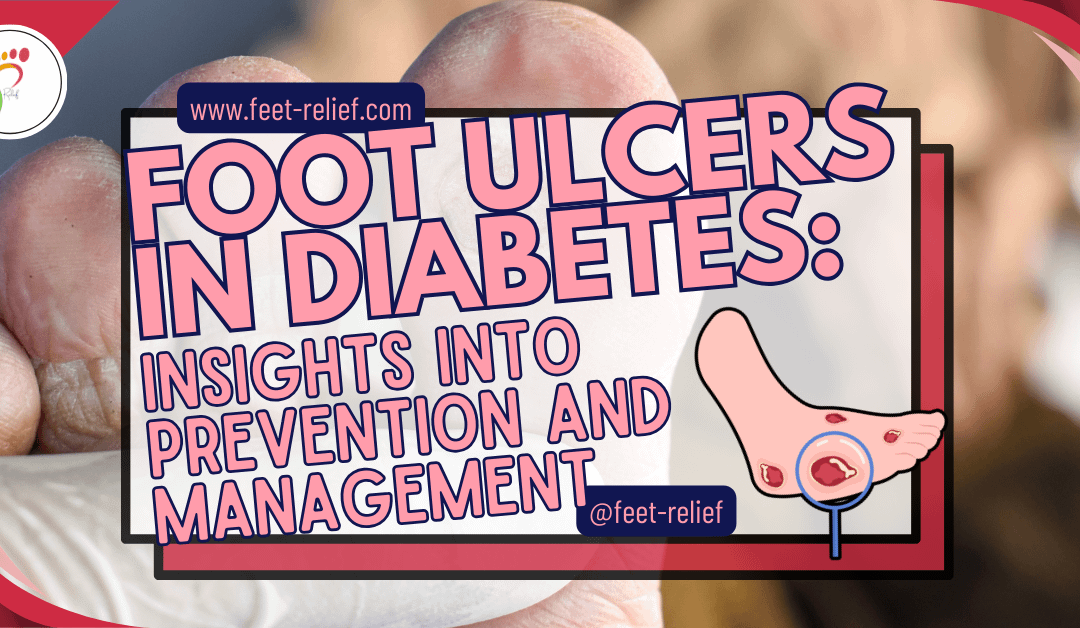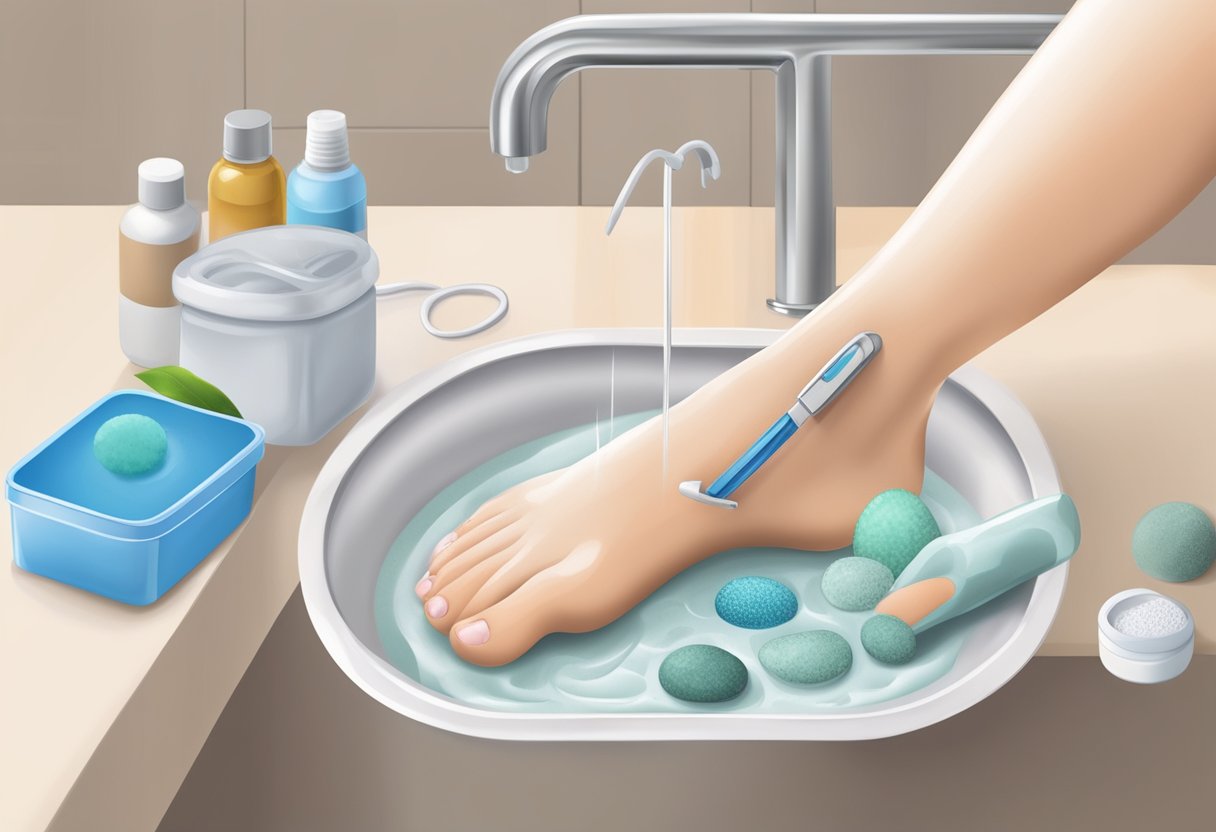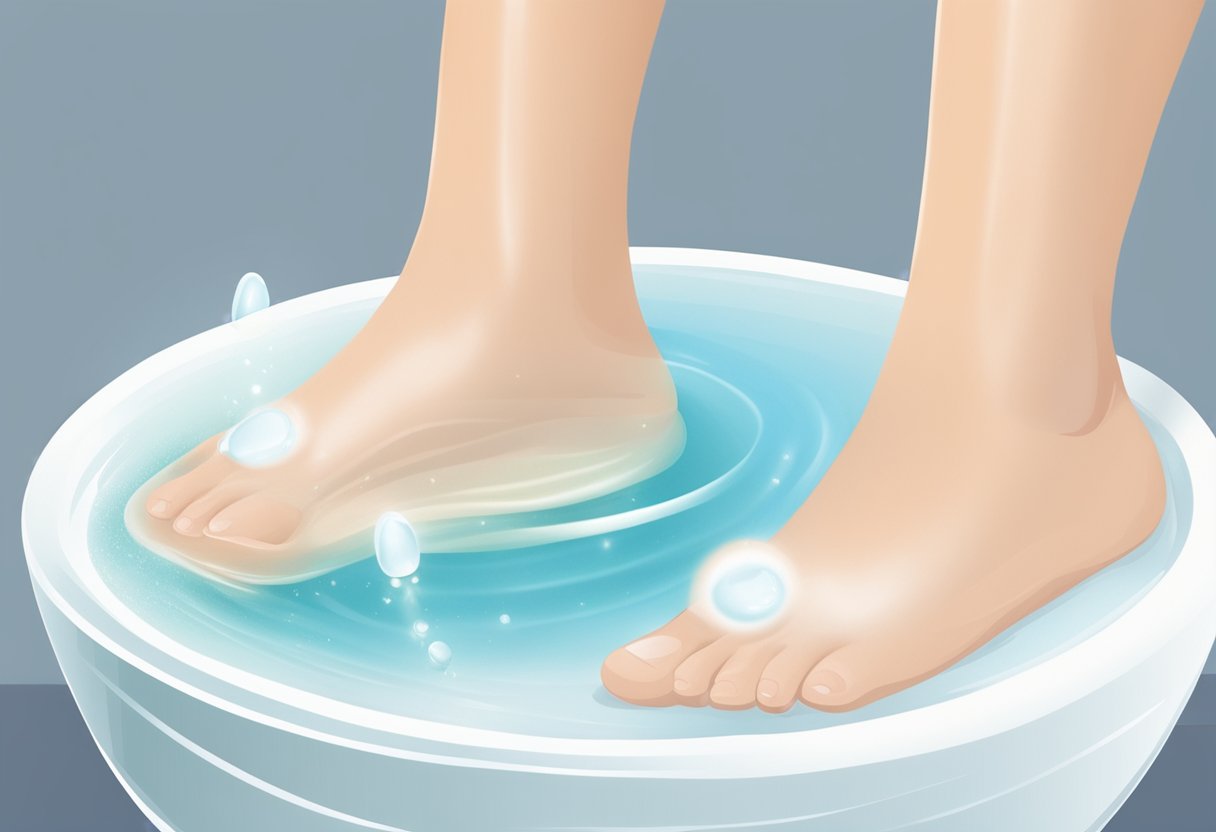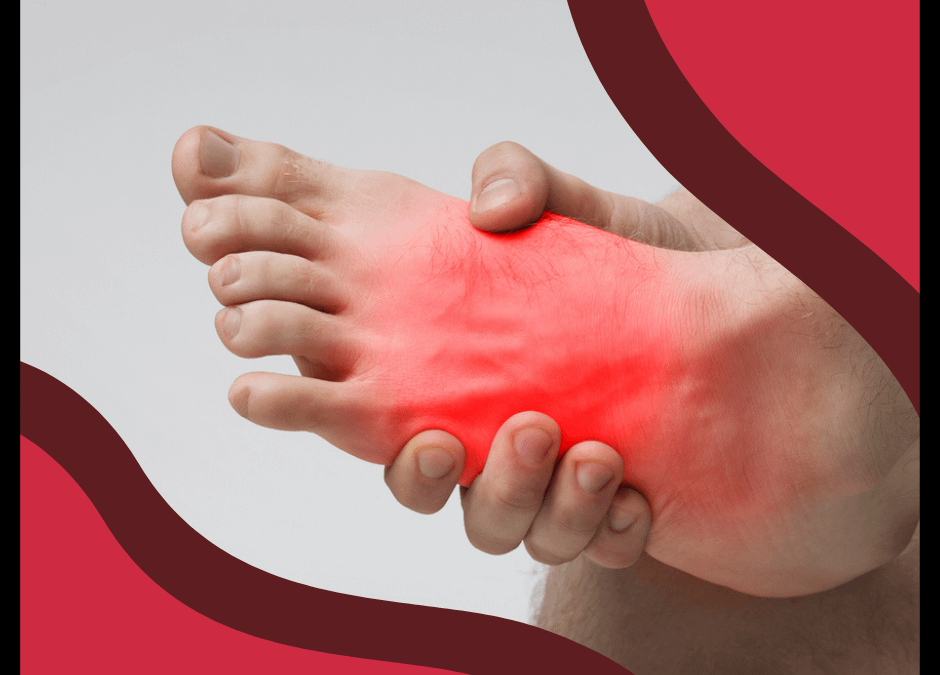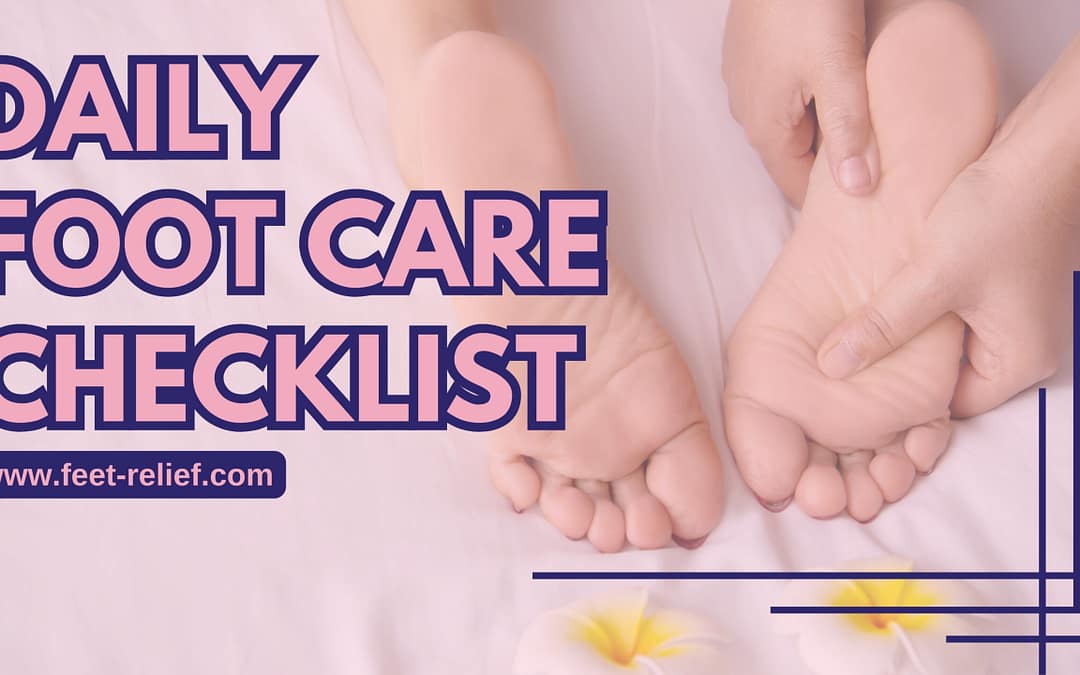
Daily Foot Care Checklist
Daily foot care is a vital part of overall wellness that often gets overlooked. Your feet have been there for you every step of the way, supporting you through life’s journeys and keeping you grounded. I’ve always valued my feet for this reason, and this appreciation is demonstrated through prioritizing their health.
Understanding the complexity of foot anatomy reveals that foot care goes beyond simple washing and drying. It involves choosing the right shoes and incorporating simple foot exercises for strength and flexibility. This comprehensive daily foot care checklist is designed to help you take a practical approach to maintaining optimal foot health and confidently put your best foot forward every day.
Daily Foot Care Checklist: Your Guide to Healthy Feet Everyday
Daily foot care is essential for maintaining overall foot health, particularly for individuals with certain health conditions, like diabetes, which can increase the risk of foot issues. Beginning with an understanding of your feet’s anatomy helps you appreciate why such regular attention is crucial. Your feet are complex structures with a network of bones, muscles, and tendons, and they deserve as much care as the rest of your body.
Proper daily foot hygiene can prevent common foot problems, including infections, bad odors, and skin issues like calluses and corns. Additionally, ensuring that your footwear fits correctly and provides adequate support is just as important as external cleanliness. Wearing the right shoes can reduce the risk of blisters, strains, and other injuries. Monitoring for changes or problems in your feet can help catch potential issues early when they’re easiest to treat, and simple exercises can strengthen your feet and improve balance, reducing the risk of falls.

In the event that a foot problem arises, knowing when to seek professional foot health services can make all the difference. By following a daily checklist, you can ensure your feet remain healthy and functional, enabling you to continue your daily activities comfortably and without interruption.
Key Takeaways
- Daily foot care is crucial for maintaining good health and preventing complications.
- Choosing and maintaining proper footwear is essential for foot comfort and injury prevention.
- Regular monitoring and early professional consultation are key to addressing foot problems effectively.
Understanding Foot Anatomy and Health
The human foot consists of bones, joints, ligaments, muscles, tendons, and arches, all working together to support weight, mobility, gait, and balance. Understanding foot anatomy helps appreciate the importance of foot care and preventing injuries.
Joints and Ligaments: These bones are connected by joints and more than 100 ligaments, allowing for the extensive range of motion necessary for activities like walking and running.
Muscles and Tendons: Your feet also have more than 20 muscles, with tendons such as the Achilles tendon at the back of your heel playing vital roles in movement.
Arches: The foot arches, including the medial longitudinal, lateral longitudinal, and transverse arch, are the foot’s main supporting structures. They absorb shock and help distribute weight across your feet.
Here’s a simple checklist for you to assess foot health and prevent issues:
- Check for pain, swelling, or redness
- Look for changes in the toenails or skin
- Monitor for any signs of numbness or decreased sensation
Remember, persistent foot problems warrant a professional consultation with a podiatrist. Regular monitoring of your foot health helps in preventing common foot problems and contributes to your overall well-being.
Washing and Drying
- Washing: You should wash your feet daily with mild soap, ensuring you clean between the toes. This step helps to remove sweat, bacteria, and dead skin cells that could contribute to fungal infections or unpleasant odors. For more detailed information on washing techniques, visit How to Practice Good Foot Hygiene.
- Drying: After washing, thoroughly dry your feet, especially between the toes. Excess moisture in these areas can promote the growth of fungi and bacteria. Towel drying should be performed with care to prevent abrasions or irritation.
Moisturizing and Protection
- Moisturizing: Apply a suitable foot moisturizer daily to prevent dryness, which can lead to cracks and other skin problems. Pay particular attention to the heels and avoid putting lotion between your toes, as this can cause excessive moisture build-up.
- Protection: Always wear clean socks, preferably those with moisture-wicking properties, and avoid sharing footwear to minimize the risk of infections. Rotate your shoes regularly to prevent overuse and give them time to air out. For considerations on proper footwear, check the guidelines at Footwear and Foot Hygiene.
Video Credit: @howcast
Proper Footwear Selection
Video Credit: @podiatryprofessionals7415
Selecting the right shoes is essential for maintaining foot health and comfort. Here, you’ll learn how to choose footwear that matches your size, suits your material preferences, and provides adequate support and cushioning.
Choosing the Right Size
- Measure Your Feet: Your foot size can change over time, so measure your feet regularly.
- Check for Space: Ensure there’s about a thumb’s width of space between your longest toe and the end of the shoe.
Material Considerations
- Breathable Fabrics: Opt for materials like leather or canvas to reduce moisture buildup.
- Durability: Shoes made from sturdy materials will hold their shape and offer better support.
Support and Cushioning
- Arch Support: Good arch support is tied to fewer foot problems.
- Cushioning: Proper cushioning absorbs impact and reduces pressure on your feet.
Footwear Hygiene
Maintaining footwear hygiene helps prevent odors and fungal growth and extends shoes’ lifespan. Proper care includes regular cleaning, thorough drying, and appropriate storage.

Regular Cleaning
Materials: You’ll need a soft brush, mild soap, and a damp cloth.
Method: For daily care, remove dirt and debris with the brush. For a more thorough clean, create a solution with mild soap and water, and gently scrub the exterior of your shoes. Wipe clean with a damp cloth.
Drying Shoes Properly
After washing or wearing in wet conditions, drying your shoes is crucial to prevent mold and odors.
Tips: Remove insoles and laces, and let them air dry separately. Avoid direct heat or sunlight, which can damage your shoes. For quicker drying, stuff it with newspaper, which absorbs moisture effectively.
Shoe Rotation and Storage
Rotate your shoes regularly to allow them to air out, which can minimize bacterial growth.
Storage tips: Keep shoes in a well-ventilated area away from direct sunlight. If space allows, use a shoe rack to prevent deformation and maintain ventilation.
Nail Care
Proper nail care is essential in daily foot hygiene to prevent infections and maintain the health of your toenails. Regular trimming and monitoring are key practices for healthy nails.

Trimming Techniques
When trimming your toenails, always use clean, sharp nail clippers. Trim straight across and avoid cutting the nails too short, as this can lead to ingrown toenails. If your nails are thick or hard to cut, soften them by soaking your feet in warm water beforehand.
- Steps for Trimming Toenails:
- Clean your tools: Disinfect nail clippers with rubbing alcohol.
- Soak your feet: This softens the nails, making them easier to trim.
- Clip straight across: Cut nails parallel to the tip of your toes.
- Smooth the edges: Use an emery board to gently file any sharp corners or rough edges.
Video Credit: @JAWSPODIATRY
Nail Health Monitoring
Regularly inspect your toenails for signs of fungal infections or other issues such as discoloration or changes in nail shape. Early detection can prevent complications and the need for more aggressive treatments. If you have diabetes or poor circulation, it’s particularly important to monitor your toenail health carefully and seek professional medical advice if you notice any abnormalities.
- Signs to Watch For:
- Changes in nail color or texture
- Unusual nail growth patterns
- Pain or swelling in the nail area
- Signs of infection such as redness or pus
Remember, proper nail care forms a critical component of overall foot health.
Monitoring for Foot Problems
Vide Credit: @MayoClinic
Taking care of your feet is crucial, especially if you have conditions such as diabetes that increase the risk of foot complications. Regular checks are essential to catch issues early.
Checking for Cuts or Bruises
Inspect your feet daily for any cuts, bruises, or abrasions. Use a mirror or ask for help if you cannot see all parts of your feet. Even minor injuries can escalate quickly if unnoticed.
Recognizing Signs of Infections
Be vigilant for signs of infection like redness, swelling, or warmth. Other indicators include persistent pain or pus. These symptoms may require immediate medical attention.
Awareness of Skin Changes
Regularly monitor for any skin changes such as dryness, peeling, or cracking. These could lead to complications and require consistent moisturization and care.
Video Credit: @HT-Physio
Stretching Routines
Toes and Ankles:
- Sit with your legs extended and loop a towel around your toes. Gently pull back until you feel a stretch in your arch and calf. Hold for 15-30 seconds and repeat three times on each foot.
- Practice ankle rotations by extending your leg, rotating your foot clockwise, and then counterclockwise. Perform ten rotations in each direction per foot.
Strengthening Exercises
Toe Grips:
- Place a small towel on the floor. Use your toes to grip and lift it off the ground. Aim for three sets of 10 grips with each foot.
Heel Raises:
- Stand with your feet hip-width apart. Slowly raise your heels until you are standing on your toes, then lower back down. Perform two sets of 15 raises.
Professional Foot Health Services
Video Credit: @StonebridgeUKCollege
When promoting optimal foot health, professional services play a critical role in both preventative care and the treatment of existing conditions. They help address issues related to injuries as well as foot complications from diabetes.
Regular Check-Ups
Frequency Matters: Just as you schedule regular dental or eye appointments, setting routine visits with a podiatrist is crucial. Podiatrists or Podiatric physicians are doctors who treat foot and lower leg problems. Aim for an annual check-up unless advised otherwise based on your specific health needs. During these visits, your feet will be examined for any signs of issues such as fungal infections, structural anomalies, or circulation problems. Regular professional assessments aid in maintaining healthy feet.
Specialist Treatments When Necessary
Seeking Expertise: Should you face any foot-related issues, it’s important to consult a specialist. Treatments could range from simple in-office procedures for nail care to more complex interventions for conditions like bunions or heel pain. Acting promptly when issues arise can be the difference between a quick fix and a long-term condition. Remember, specialized care can prevent further complications and aid in a faster recovery.
Daily Foot Care: Stepping Towards Overall Foot Health
Daily foot care is a commitment to your overall well-being and happiness. You can prevent discomfort and avoid potential issues by following simple yet effective practices in your daily life, such as proper hygiene, appropriate footwear selection, and regular monitoring of your nails.

Consistently assess the condition of your feet and give them the attention they deserve. Remember that even small changes in your daily routine can impact your foot health and enhance your enjoyment of life’s adventures. A step towards healthier feet and let it take them to carry you to a brighter future.
Frequently Asked Questions
Ensuring daily foot care is crucial, especially for individuals with diabetes, as it can prevent severe complications. This section will guide you through the steps and products to incorporate into your daily routine and how to carry out a proper foot self-inspection.
What steps should individuals with diabetes take each day for optimal foot health?
To maintain optimal foot health, you should wash your feet daily with mild soap and lukewarm water, dry them thoroughly, especially between the toes, and inspect them for any cuts, blisters, or changes in skin and nail condition. Moisturizing your feet is also important, but avoid applying lotion between the toes.
What products are recommended for daily foot care in diabetic patients?
Use a mild soap and a quality moisturizer that doesn’t contain irritants or fragrances that can cause skin issues. For protective purposes, invest in diabetic-friendly socks that provide cushioning and do not have tight elastic bands.
How should one conduct a self-inspection of the feet to detect early signs of diabetes complications?
Conducting a self-inspection involves looking for redness, swelling, cuts, blisters, and changes in toenail color or thickness. A mirror can help examine the soles, and touching the feet with a filament ensures you still have a proper sensation.
What are the essential elements in a basic foot care routine to prevent diabetic foot issues?
A basic foot care routine includes cleaning, inspecting, and moisturizing the feet daily. Always dry your feet well and trim toenails straight across to avoid ingrown nails. Wearing shoes that fit well and provide support will help prevent issues.
Could you outline a daily foot care procedure to minimize the risk of diabetes-related foot problems?
A daily foot care procedure might include washing your feet with gentle soap, carefully drying them, applying moisturizer (excluding areas between the toes), conducting a detailed inspection of the feet, and wearing protective footwear throughout the day.
What education tips can you provide for people with diabetes to help them understand the importance of daily foot care?
Education on foot care should emphasize the increased risk of infections and complications due to diabetes. Stress the necessity of daily inspections, proper footwear, and seeking medical advice when you notice any changes or injuries to your feet.










